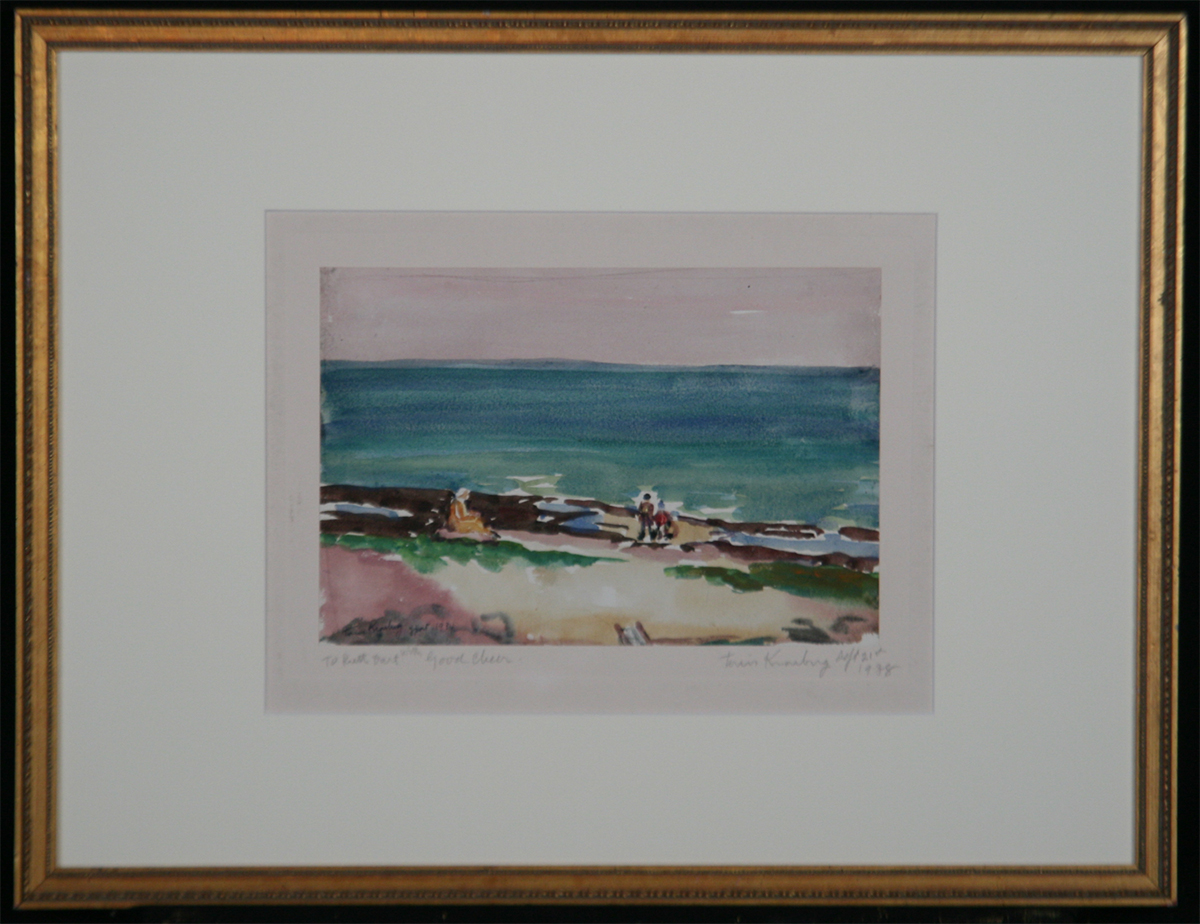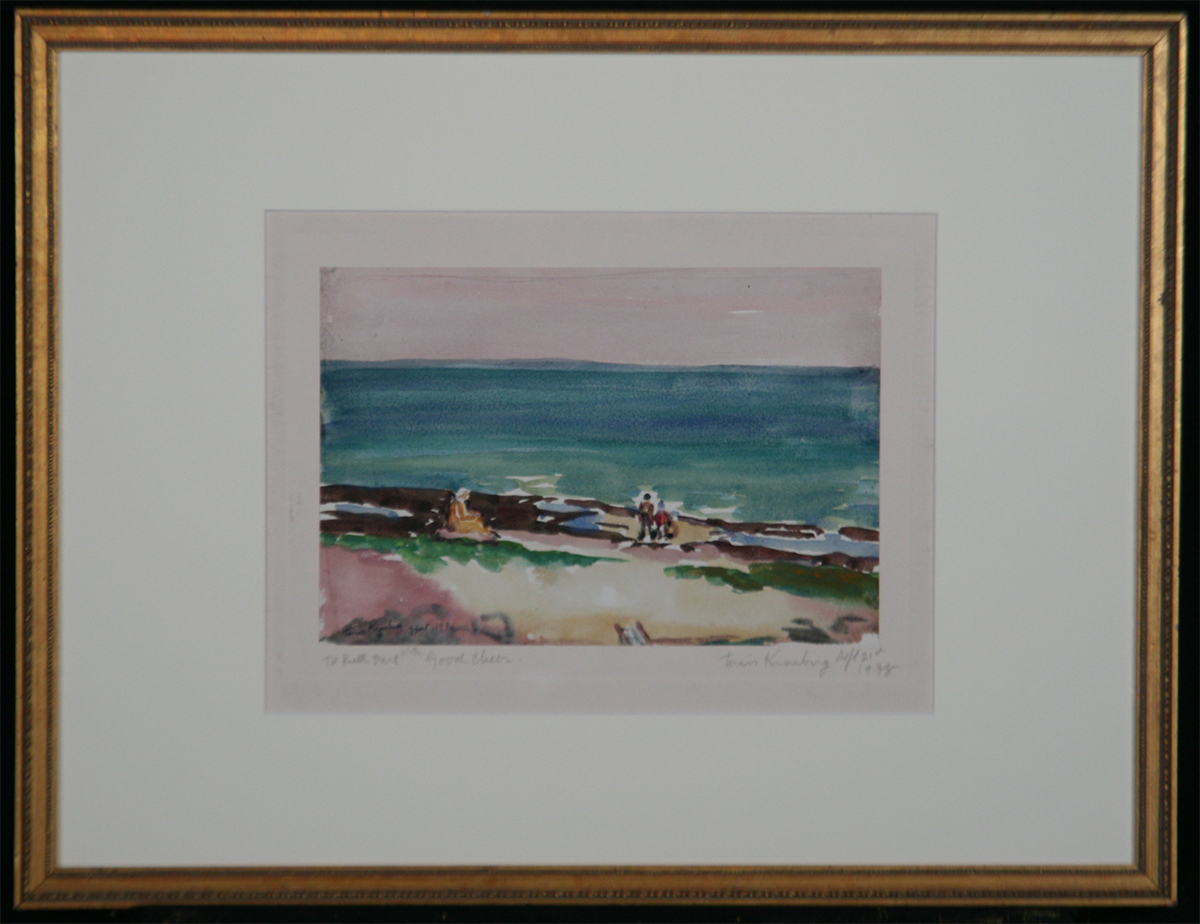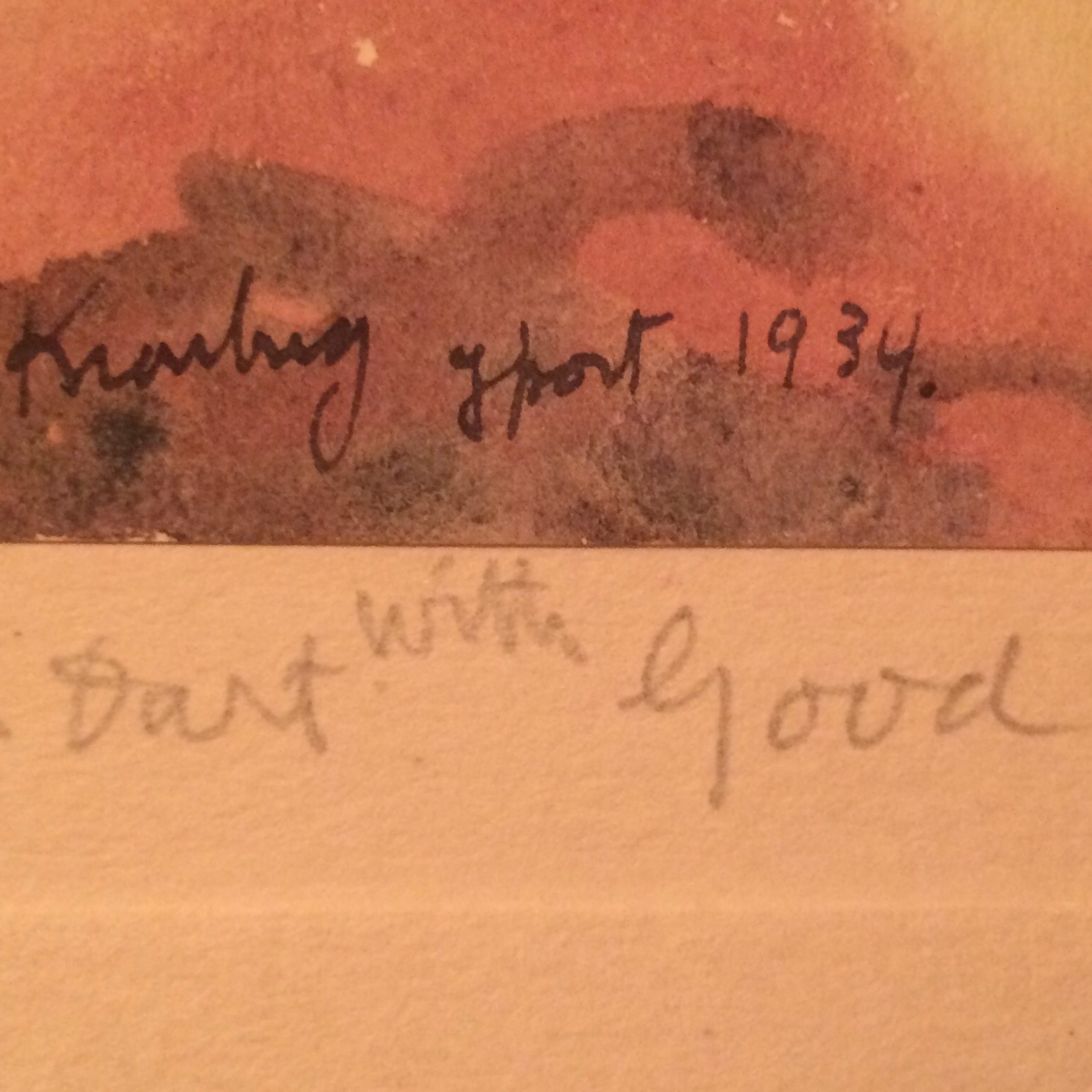Description
Condition Report: Painting signed “Louis Kronberg YPort 1934” lower left. It appears four years later that the artist gifted this piece, as it reads “To Ruth Dart with Good Cheer” on mat lower left. Artist signed mat again lower right “Louis Kronberg Sept 21st 1938” Both painting and frame are in good condition.
Biography from the Archives of askART
LOUIS KRONBERG
Kronberg, often referred to as “the American Degas,”was born in Boston on December 20, 1872. He displayed artistic talent in his elementary school years and while he was only fifteen years old, his brother, who had become an impresario, made it possible for Louis to copy portraits of stage and concert celebrities backstage. Louis came to know Ignaz Paderewski, Boris Chaliapin, and other big names. Kronberg eventually became a student at the School of the Museum of Fine Arts, Boston where he was influenced by the Tarbell-Benson manner. By October of 1889, Kronberg was in New York where he sought new inspiration at the Art Students League. The Boston Museum School’s Longfellow Traveling Scholarship allowed Kronberg to continue his art studies in France. Then in his early twenties, Kronberg sailed for Europe.
Once in Paris (1894-97), Kronberg enrolled in the Académie Julian and he came to know the work of Degas, the basic tenets of impressionism, and the juste-milieu painters. After returning to America, Kronberg participated in various group exhibitions such as the annuals of the Boston Art Club (1891-1907), the Pennsylvania Academy of the Fine Arts (1892-1941), the Art Institute of Chicago (1898-1940), and at the National Academy of Design (1911-49). He exhibited pastels in the Paris Salons of 1897-99 and in 1900, he showed a pastel nude study at the Exposition Universelle. By the turn of the century, Kronberg’s preference for subjects of the theater was dominant. Contemporary art critic Sadakichi Hartmann (1902, vol. 2, p. 251) pointed out that Kronberg “has a keen eye for movement and footlight effects, and the ability to express them with a brilliancy of color.” Kronberg’s treatment of the theme became somewhat predictable by 1906 when more than fifty oils, watercolors, drawings, and pastels brought him notable coverage by the press. Kronberg’s imagery of dancers is less genteel than most Boston School art in which women appear in their safe, luxurious homes. The stage was, after all, despite the rigorous discipline of a dancer’s life, a place for loose, bohemian morality.
Kronberg received a silver medal at the Panama-Pacific International Exposition in San Francisco (1915). After that time, his painting became well known to the American art community and gained a place in numerous museum collections. The Isabella Stewart Gardner Museum, for example, has nine of Kronberg’s works. The artist worked mainly in Boston though in 1921, he decided to relocate to New York City. There he was active in the Salmagundi Club and during that decade (even into the early 40s), solo shows occurred in Chicago, Boston, and New York. The Guild of Boston Artists honored him with a show in 1935. Two years later, Kronberg was awarded a Medal of Honor at the Paris International Exhibition for a painting entitled The End of the Ballet, featuring a ballet dancer with a bouquet of flowers. This event carved him a niche in the French art world.
About Kronberg’s theater and ballet subjects, one critic stated that, “in spite of all the aura of the stage, of the glamour of the footlights, Kronberg’s dancers remain living human beings drawn all the nearer to us as they stand framed in a poetry of color.” (Cerutti-Simmons, 1928, p. 194). Regardless of Degas’ precedent, Kronberg rejected the “accidental compositions” in favor of more traditional, almost illustrative images. Although he understood the technique of impressionism and used it to present the excitement of the ballet, his subjects appear posed. There is, however, a luxurious richness in Kronberg’s application of paint, which complements his ability to observe the myriad effects of artificial light upon flesh and inanimate objects, an effect that recalls Degas. Frequently these images were worked up from preliminary watercolor studies that Kronberg collected during his travels; these intensified the painterly aspect of his art. Although Kronberg was always a keen observer of human movement and the effects of light and color upon form, his figures are solid forms in space.
Kronberg’s fascination with dancers was manifested in his studio, which was adorned with various souvenirs, costumes, and other paraphernalia from the theater. His other favorite theme, that of the Spanish dancer, shows an independence from Degas. Kronberg seems to have done these works with less inhibition and thus he achieved an even greater intimacy and understanding of a dancer’s movements. One such painting, Dancer in White, was chosen as his reception piece for membership in the Société Nationale des Beaux-Arts in 1922. Kronberg was also made a chevalier of the French Légion d’Honneur. He was a competent portraitist and painter of the nude; unfortunately, these works are rarely seen. He was always a popular painter whom the press never failed to recommend. Referring to the exhibition at Grand Central Art Galleries, Royal Cortissoz of the Herald Tribune was quoted in Art Digest (15 December 1940) as saying that Kronberg’s ballet subject matter “poses the always alluring problem of action . . . The figure in graceful aspects [and] it has atmosphere. All these things emerge from under the skillful hand of Louis Kronberg.” The artist lived to the grand old age of ninety-three, passing away in Palm Beach, Florida in 1965, when artists such as Robert Motherwell, Robert Rauschenberg, and Jasper Johns were in the headlines.
Sources:
Hartmann, Sadakichi, “Art and Artists,” Musical America 1 (17 December 1898): 39; Idem, A History of American Art. Boston: L.C. Page and Co., 1902, vol. 2, pp. 251-252; Idem, (S.H.), “Studio Talk,” International Studio 28 (March 1906): 73-74; Coburn, Frederick W., “Famous New England Artists Series IV: Louis Kronberg’s The Egyptian Princess,” New England Magazine 38 (June 1908): 495-499; Cerutti-Simmons, Teresa, “Behind the Scenes with Louis Kronberg,” American Magazine of Art 19 (April 1928): 194-200; Jewett, Eleanor, “Paintings by Kronberg Avoid the Frantic, Content with Art,” Chicago Tribune, 29 January 1929; Isham, Samuel, The History of American Painting [first published in 1905] with supplemental chapters by Royal Cortissoz. New York, Macmillan, 1936, p. 574; Dame, Lawrence, “Regarding Art,” Boston Herald, 7 November 1950, p. 35; Gerdts, William H., American Impressionism. Seattle: The Henry Art Gallery, 1980, p. 121; Gerdts, William H., American Impressionism. New York: Abbeville Press, 1984, p. 218; Zellman, Michael David, Three Hundred Years of American Art. Secaucus, NJ: Wellfleet Press, 1987, p. 654; Fairbrother, Trevor J., The Bostonians: Painters of an Elegant Age, 1870-1930. Boston: Northeastern University Press, 1986, p. 217.
Submitted by Richard H. Love and Michael Preston Worley, Ph.D.












Reviews
There are no reviews yet.